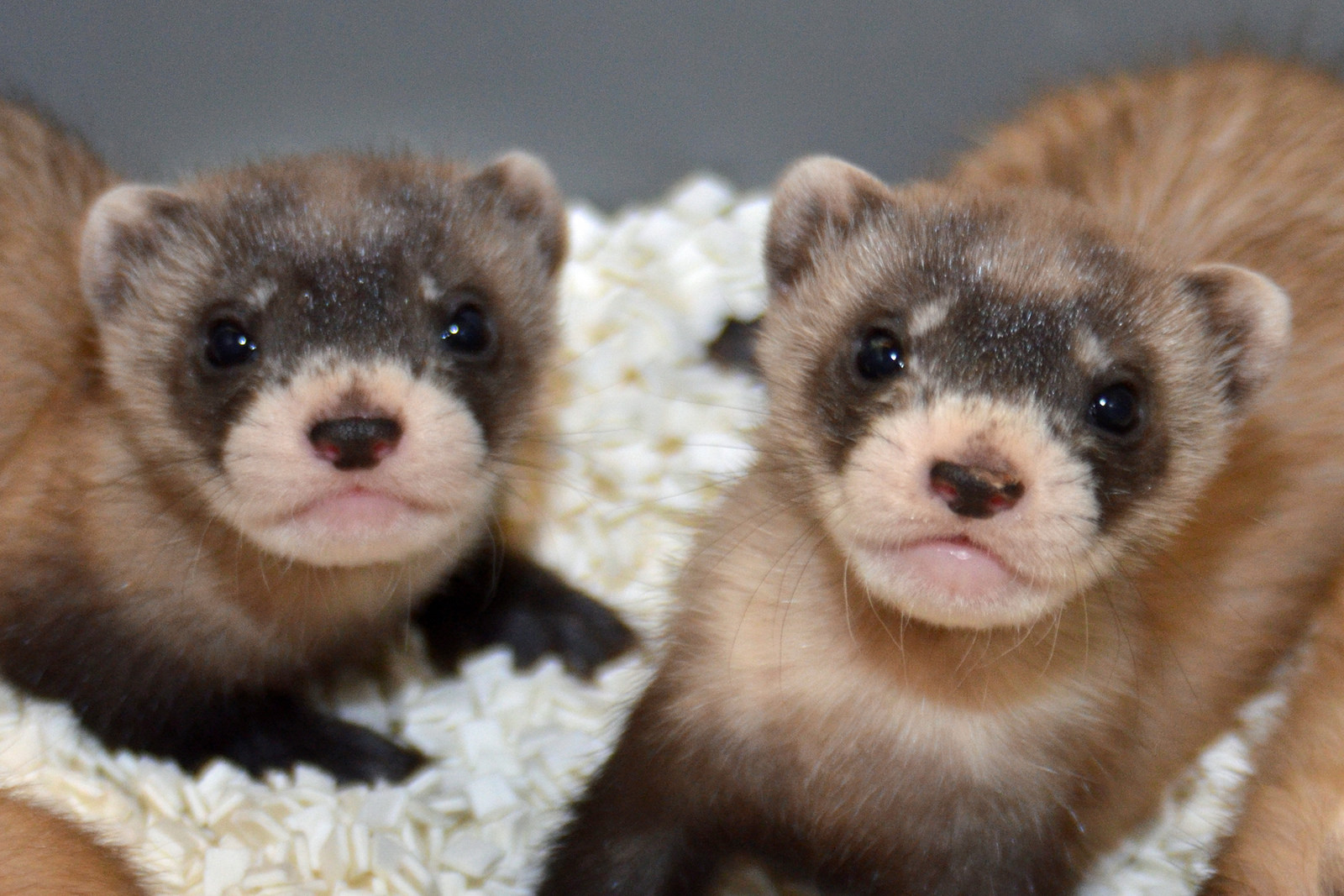Critically Endangered Black-Footed Ferret Diversity Improved by Using Frozen Sperm for Assisted Reproduction
The Smithsonian Conservation Biology Institute (SCBI) has been a leader in black-footed ferret conservation since a small population of this solitary, nocturnal carnivore was discovered in 1981. SCBI received offspring from the species' surviving 18 individuals and was the first institution to breed black-footed ferrets outside of Wyoming. Faced with a genetic bottleneck, SCBI scientists mitigated threats to the survival of the species by using semen that had been cryopreserved for 10 to 20 years to artificially inseminate live female ferrets.
The SCBI team, including David Wildt, Paul Marinari and JoGayle Howard, as well as partners from U.S. Fish and Wildlife Service (USFWS), Lincoln Park Zoo, Louisville Zoological Garden, Cheyenne Mountain Zoo, Phoenix Zoo and Toronto Zoo, found they could meet the need to increase the number of black-footed ferrets born in human care while enhancing genetic diversity within the species. The work was published Aug. 13 in the Animal Conservation paper "Recovery of Gene Diversity Using Long-Term Cryopreserved Spermatozoa and Artificial Insemination in the Endangered Black-Footed Ferret."
“Our study is the first to provide empirical evidence that artificial insemination with long-stored spermatozoa is not only possible but also beneficial to the genetic diversity of an endangered species,” said David Wildt, senior scientist and head of the Center for Species Survival at SCBI. "What we've done here with the black-footed ferret is an excellent example of how sperm preservation can benefit species recovery programs."
USFWS developed and oversees the Black-Footed Ferret Recovery Program. The Association of Zoos and Aquariums' Species Survival Plan manages the black-footed ferret breeding program at ex situ facilities with a breeding population composed of about 300 animals. For this study, all the males were managed either at SCBI or at the USFWS National Black-Footed Ferret Conservation Center. Scientists collected semen samples from adult black-footed ferrets that ranged in age from 1 to 6 years old. All females were solely managed at SCBI.
Initially, scientists used fresh semen to artificially inseminate females who failed to naturally mate with males, resulting in 135 kits. With just a few founders to rebuild an entire species, early managers of the black-footed ferret recovery program knew that genetic diversity would be lost. Loss of genetic variation can lead to increased sperm malformation and lower success of pregnancy over time. Researchers, led by black-footed ferret Reproduction Advisor Rachel Santymire of the Lincoln Park Zoo, routinely collected and preserved black-footed ferret semen for later use as part of standard operating procedures.
SCBI maintains the only genome resource bank for black-footed ferrets that preserves frozen semen from genetically valuable males, thereby extending their reproductive life. Zoo scientists use this semen for artificial insemination (AI) to maintain and enhance genetic diversity by infusing underrepresented genes into the population at strategic times.
SCBI was the first institution to develop a successful laparoscopic artificial insemination technique for black-footed ferrets. Females are induced ovulators, which means that mating causes the ovary to release its eggs. SCBI researchers developed a hormone treatment that artificially causes ovulation to occur. Scientists then deposited the male's fresh or frozen-thawed sperm directly into the female's uterus. Animal care staff closely monitored potentially pregnant females by taking weight measurements and remotely monitoring the nest boxes via closed-circuit cameras.
During the 2008 breeding season, SCBI scientists used semen samples from four male black-footed ferret donors that had been frozen for 10 years. Black-footed ferret Population Advisor Colleen Lynch of Riverbanks Zoo and Garden conducted population genetic analysis to select pairings of deceased sperm donors with living females based on several genetic metrics, including mean kinship of the parents and inbreeding coefficients of potential offspring to maximize the genetic benefit of successful pairings. Two became pregnant and gave birth to two kits. In the years that followed, subsequent AIs incorporated semen that had been cryopreserved up to 20 years, also resulting in successful pregnancies. Six of the eight kits produced 32 offspring and grand offspring by natural mating. More significantly, researchers found that incorporating these individuals into the population enhanced overall genetic diversity and lowered measures of inbreeding over time.
“Our findings show how important it is to bank sperm and other biomaterials from rare and endangered animal species over time," said Paul Marinari, senior curator at SCBI. "These ‘snapshots' of biodiversity could be invaluable to future animal conservation efforts, which is why we must make every effort to collect, store and study these materials now."
Headquartered in Front Royal, Va., SCBI facilitates and promotes veterinary and reproductive research as well as conservation ecology programs based at Front Royal, the National Zoo and at field research stations and training sites worldwide. Its scientists are leaders in applying advanced biomedical approaches, including assisted reproductive technologies and germplasm cryopreservation, for enhancing the demographic and genetic diversity of endangered species. SCBI scientists train students to become leaders in the conservation field. The National Zoo and Conservation Biology Institute is a part of the Smithsonian Institution, the world's largest museum and research complex.

